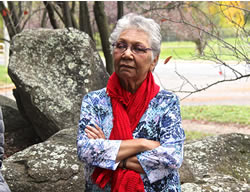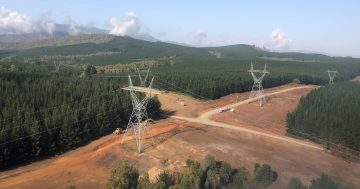
Picture: Steve Skitmore (ANU)
A traffic island in Griffith has made history on two fronts, firstly by being granted heritage status and secondly by being the first of its kind to be so recognised.
The area, known as the Red Hill Campsite, bordered by Flinders Way, Durville Crescent and Hayes Crescent, has been named a significant site of Indigenous oral history.
The special status recognises how Aboriginal people lived and travelled throughout the region during the early-to-mid 20th century.
The push for heritage status followed a long campaign by archaeology students and academics at the Australian National University (ANU) and members of the Ngambri-Ngunnawal community led by Elder Matilda House (pictured).
Senior Lecturer in Archaeology at ANU, Duncan Wright said the heritage listing gave voice to a missing era of contemporary Indigenous history.
“While there is recognition that Ngambri-Ngunnawal are traditional custodians for Canberra, there’s silence about their role in the origins of our capital city,” Dr Wright said.
“We lack stories about people who remained on country, remained connected, even helped build some of Canberra’s infrastructure. So, to have the Red Hill campsite heritage listed is just so important.
“This place embodies important memories about Canberra’s early days from the perspective of an important Elder for the region, Aunty Matilda”.
Former archaeology student at ANU, Steve Skitmore led an excavation in 2016 which investigated the number of years the site was used and occupied.
He said the Red Hill campsite was on the very outskirts of Canberra and people gathered there because it was close to water and families could stay there without being bothered.
Aunty Matilda remembered camping at the site as a little girl when her grandparents came into Canberra from Erambi Mission to do domestic work.
“I remember sitting in the corner with an Arrowroot biscuit and a glass of milk while my grandmother swept floors and did the housework,” Aunty Matilda said.
“The campsite was here all through the ’60s and ’70s but then it disappeared and I got really worried,” she said.
“It’s great the place has been recognised for the oral history of our family.”
The traffic island is currently landscaped as a park but Mr Skitmore and Aunty Matilda hope to see a playground and more references to past Indigenous use added in the near future.




